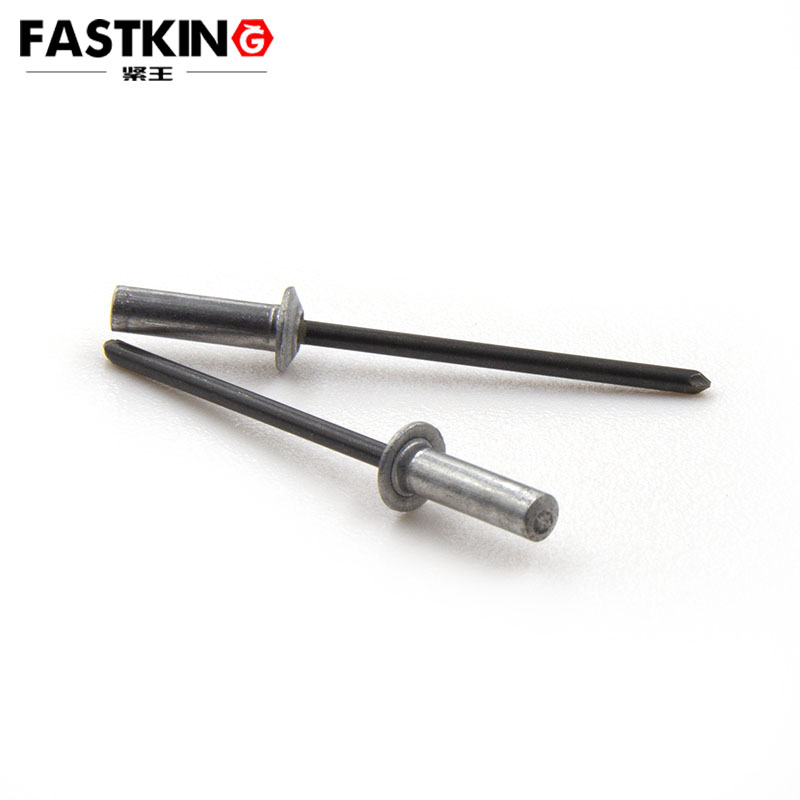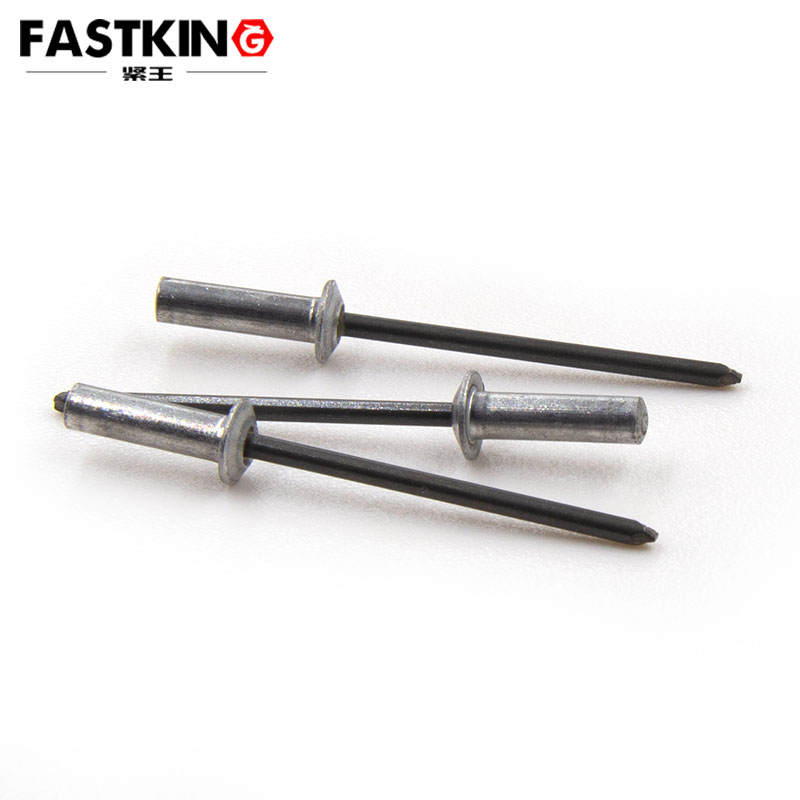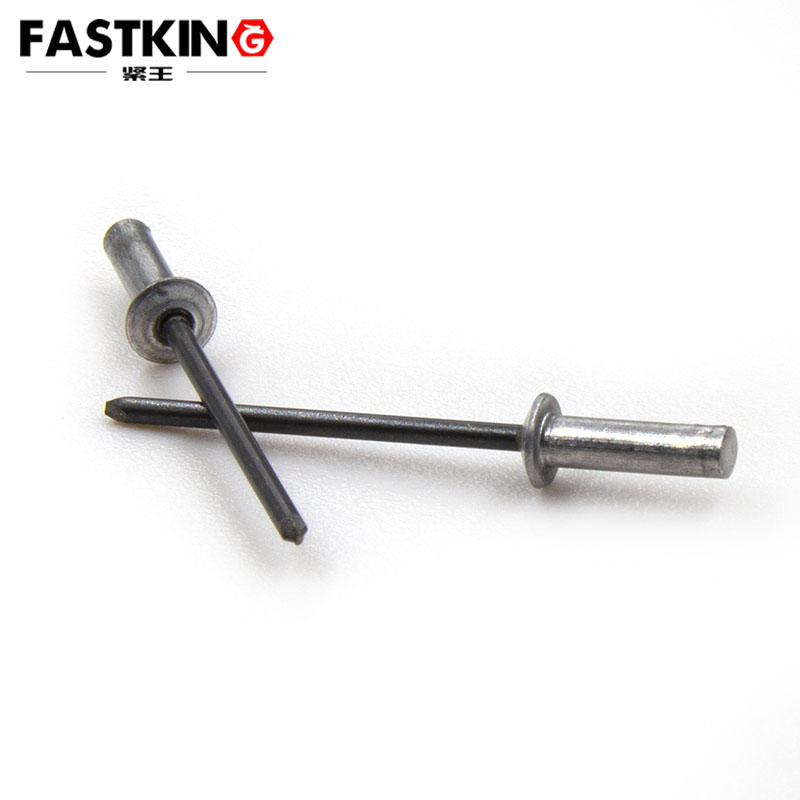Closed-end round head blind rivets are a common type of fastener widely used in various scenarios requiring high strength and high sealing performance. Their structural feature lies in the round head design and closed end, which creates a sealing effect during the riveting process, preventing liquid or gas leakage. The installation process of blind rivets is simple and fast, suitable for both automated production lines and manual operations, offering high efficiency and reliability.
Usage Scenarios of Closed-End Round Head Blind Rivets
1. Automotive Manufacturing
In automotive manufacturing, closed-end round head blind rivets are commonly used for connecting body panels, interior components, and chassis parts. Due to their closed-end design, they effectively prevent moisture, dust, and other contaminants from entering the connection points, extending the lifespan of automotive components. For example, they are often used in doors, hoods, and trunk lids.

2. Aerospace Industry
The aerospace industry has extremely high requirements for fasteners. Closed-end round head blind rivets are widely used in critical areas such as aircraft fuselages, wings, and engines due to their high strength, sealing performance, and corrosion resistance. Their closed-end design effectively prevents fuel, hydraulic oil, and other liquids from leaking, ensuring flight safety.
3. Electronics and Electrical Industry
In electronic and electrical products, closed-end round head blind rivets are often used to secure components such as casings, heat sinks, and circuit boards. Their closed-end design prevents dust and moisture from entering the device, protecting the normal operation of electronic components. For example, they are commonly used in computer cases, power supply housings, and LED lighting fixtures.
4. Construction Industry
In the construction industry, closed-end round head blind rivets are frequently used for connecting metal curtain walls, roofs, doors, and windows. Their high strength and sealing performance effectively resist wind and rain erosion, ensuring the long-term stability and safety of buildings.
5. Home Appliance Manufacturing
Home appliances such as washing machines, refrigerators, and air conditioners often use closed-end round head blind rivets to secure casings and internal brackets. Their closed-end design prevents moisture and dust from entering the device, extending the lifespan of the appliances.
Usage Methods of Closed-End Round Head Blind Rivets

1. Preparation
Before using closed-end round head blind rivets, prepare the necessary tools and materials. Common tools include a rivet gun, drill bits, and measuring tools. Ensure that the rivet specifications match the hole diameter of the connecting parts to avoid installation difficulties or weak connections due to size mismatches.
2. Drilling
Drill holes in the workpieces that match the diameter of the rivets. The hole diameter should be slightly larger than the rivet shank to ensure smooth insertion. Pay attention to the perpendicularity of the holes to avoid tilting, which could lead to weak connections.
3. Inserting the Rivet
Insert the closed-end round head blind rivet into the pre-drilled hole, ensuring that the rivet head is tightly fitted against the workpiece surface. If using a manual rivet gun, insert the rivet tail into the gun's chuck, ready for riveting.
4. Riveting Operation
Use the rivet gun to perform the riveting operation. A manual rivet gun pulls the mandrel out by pulling the trigger, causing the rivet tail to expand and form a secure connection. Automatic or pneumatic rivet guns use compressed air or electric power to complete the riveting process quickly. During riveting, ensure the rivet gun is perpendicular to the workpiece surface to avoid weak connections or damage due to improper angles.
5. Inspecting Rivet Quality
After riveting, inspect whether the rivet head is tightly fitted against the workpiece surface and whether the tail has fully expanded to form a secure connection. If the connection is weak or loose, replace the rivet and repeat the riveting process.
6. Cleaning the Worksite
After riveting, clean the worksite by removing excess mandrel pieces and debris to maintain a tidy working environment.
Precautions

1. Selecting the Appropriate Rivet Specifications
Different scenarios require closed-end round head blind rivets of different specifications. Choose the appropriate rivet diameter and length based on the material, thickness, and connection strength requirements of the workpiece.
2. Ensuring Hole Precision
The precision of the drilled holes directly affects the quality of the riveting. Holes that are too large or too small can result in weak connections or even damage the workpiece. Therefore, strictly control the hole diameter and perpendicularity during drilling.
3. Avoiding Over-Riveting
During the riveting process, avoid excessive force or over-pulling the mandrel, as this can cause the rivet tail to over-expand, weakening the connection or damaging the workpiece.
4. Regular Tool Maintenance
Tools such as rivet guns gradually wear out over time, affecting riveting quality. Therefore, regularly maintain and service the tools to ensure they remain in good working condition.
5. Conclusion
Closed-end round head blind rivets are an efficient and reliable fastener widely used in industries such as automotive manufacturing, aerospace, electronics, construction, and home appliance manufacturing. Their closed-end design and high strength make them ideal for scenarios requiring sealing performance and durability. By following the correct usage methods and precautions, you can ensure riveting quality, improve work efficiency, and extend the lifespan of connected components.
